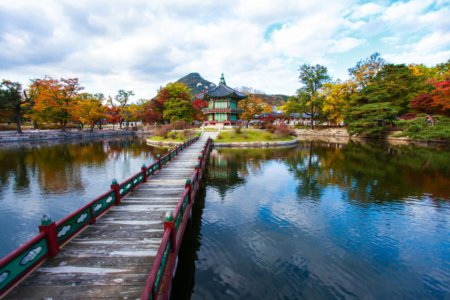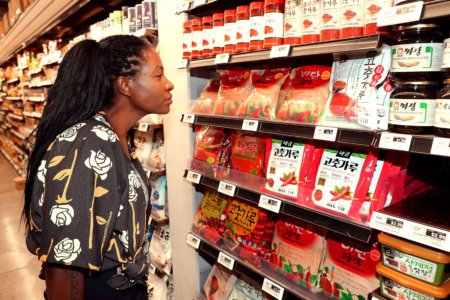
Living in Korea is a dream for many. There are not only lots to see and do in South Korea, but it is also an excellent study abroad destination for many students. In 2021 alone, there were approximately 152,000 international students pursuing their tertiary education in this compact yet compelling country.
Home to 23 QS ranked institutions, its capital city ranked first in the QS Best Student Cities in Asia 2023 list and second in the world, tied with Munich. Seoul is home to South Korea’s most prestigious “SKY” universities: Seoul National University, Korea University, and Yonsei University.
However, Seoul is also infamous for its high cost of living. International students who have chosen to study in this large metropolis must prepare a huge chunk of their monthly allowance and allocate it for rent, especially if they are thinking of renting a room or apartment outside of the university.
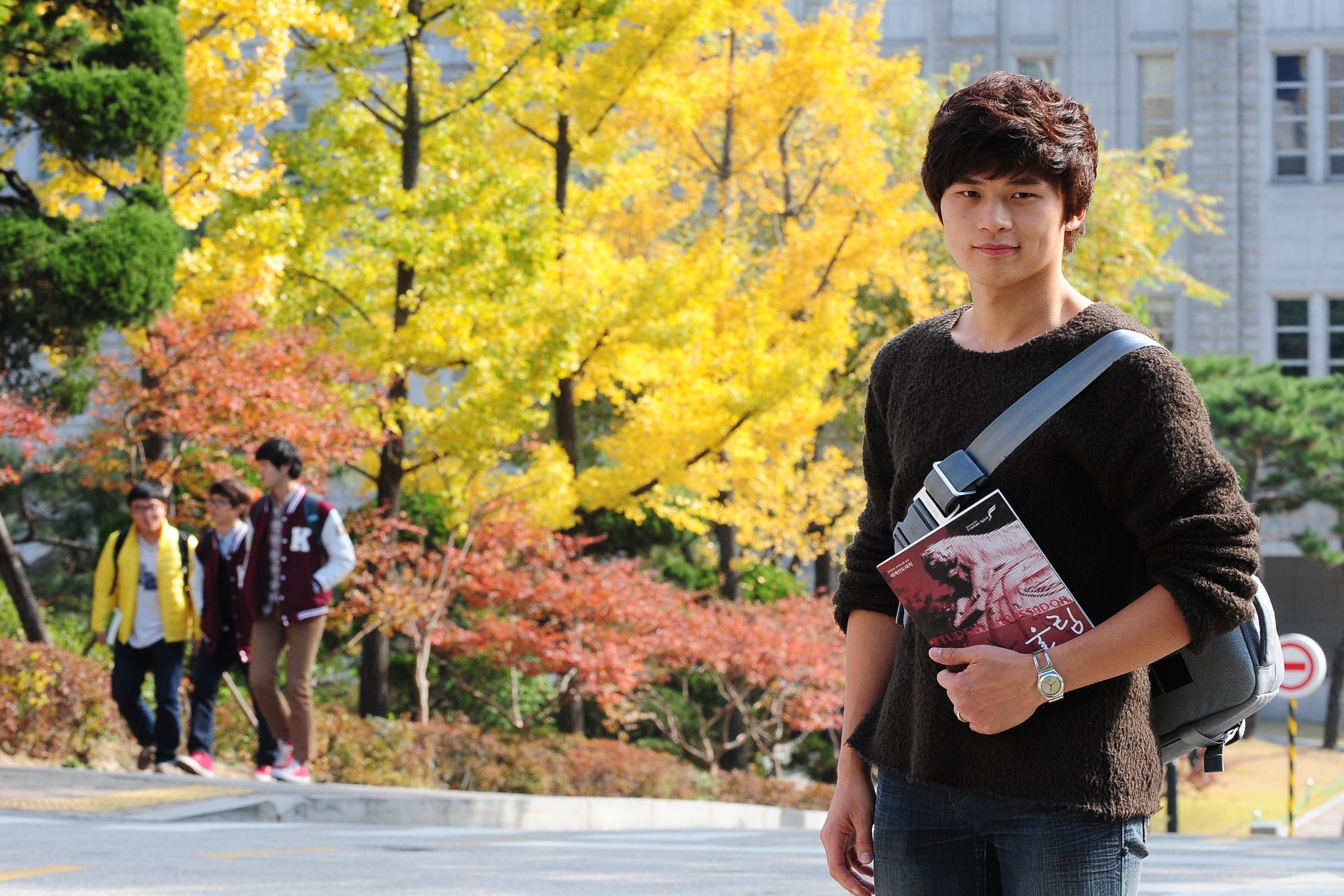
Lee Yong-Chan, a 23-year-old student, poses in front of Korea University in Seoul. Source: Park Ji-Hwan/AFP
Your A to Z guide to living in Korea
There’s both good news and bad news for those looking to spend less on rent and opt for on-campus accommodation. Living in dorms is a convenient option, but it can be difficult to get a spot. For instance, Korea University notes on its website that it “is not able to guarantee all international students on-campus accommodation”.
Study in Korea notes dormitory fees can cost approximately about 420 US dollars to US$1,550 per semester while rent outside of campus could cost approximately US$300 per month, in addition to a security deposit of US$3,000 to US$5,000. Prices will vary depending on your university and location.
At Korea University, for instance, prices can range from 400,000 KRW to 2,000,000 KRW (~US$300 to US$1500) per term.
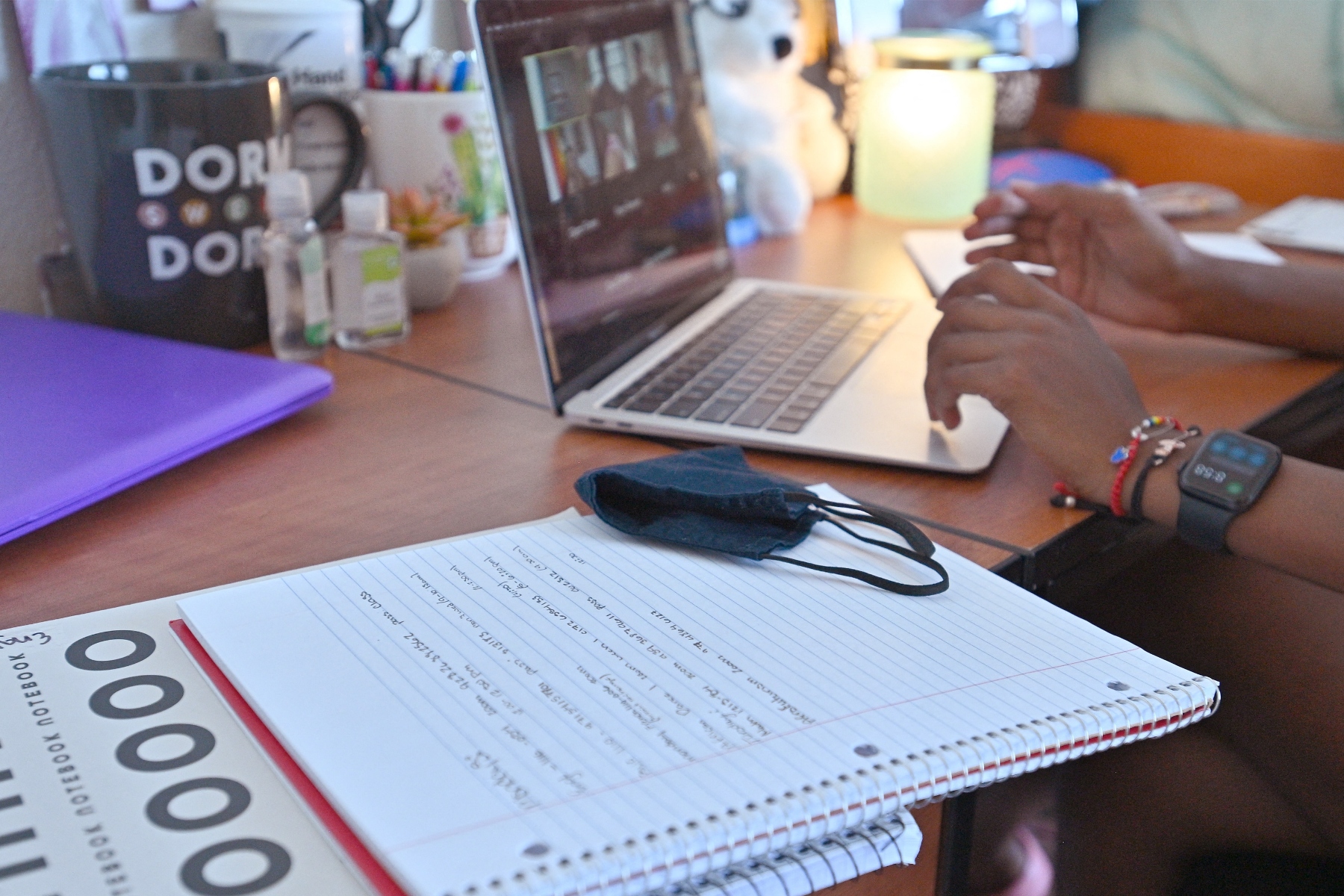
Every semester, both local and international students compete to rent dorm rooms in Korean universities. Source: Sam Wasson/Getty Images North America/Getty Images via AFP
Types of accommodation in Korea
Besides dorm rooms, students can also look out for these accommodation options when living in Korea:
- Apartments: In South Korea, apartments are high-rise complexes. The height and the number of the buildings might differ in smaller cities, but in general, they are owned by a company that has its own brand (like Hyundai or Lotte), notes InterNations. The apartments themselves are often bigger, with more than one room.
- Officetels: These are a combination of an office and a hotel. These studio-type rentals have all the essentials in one room.
- Villas: Villas in South Korea are actually apartment buildings, typically located further away from the centre and have fewer than six floors. They are usually individually owned, so landlords may live near you or in the same building. There are no lifts, however, if that is a deal breaker for you.
- Houses: Single-story homes tend to be very expensive and located further away from the city. If you are bringing your family with you, this could be an option. Do keep in mind that you’ll need to pay a substantial amount for both your deposit and monthly rent, notes InterNations.
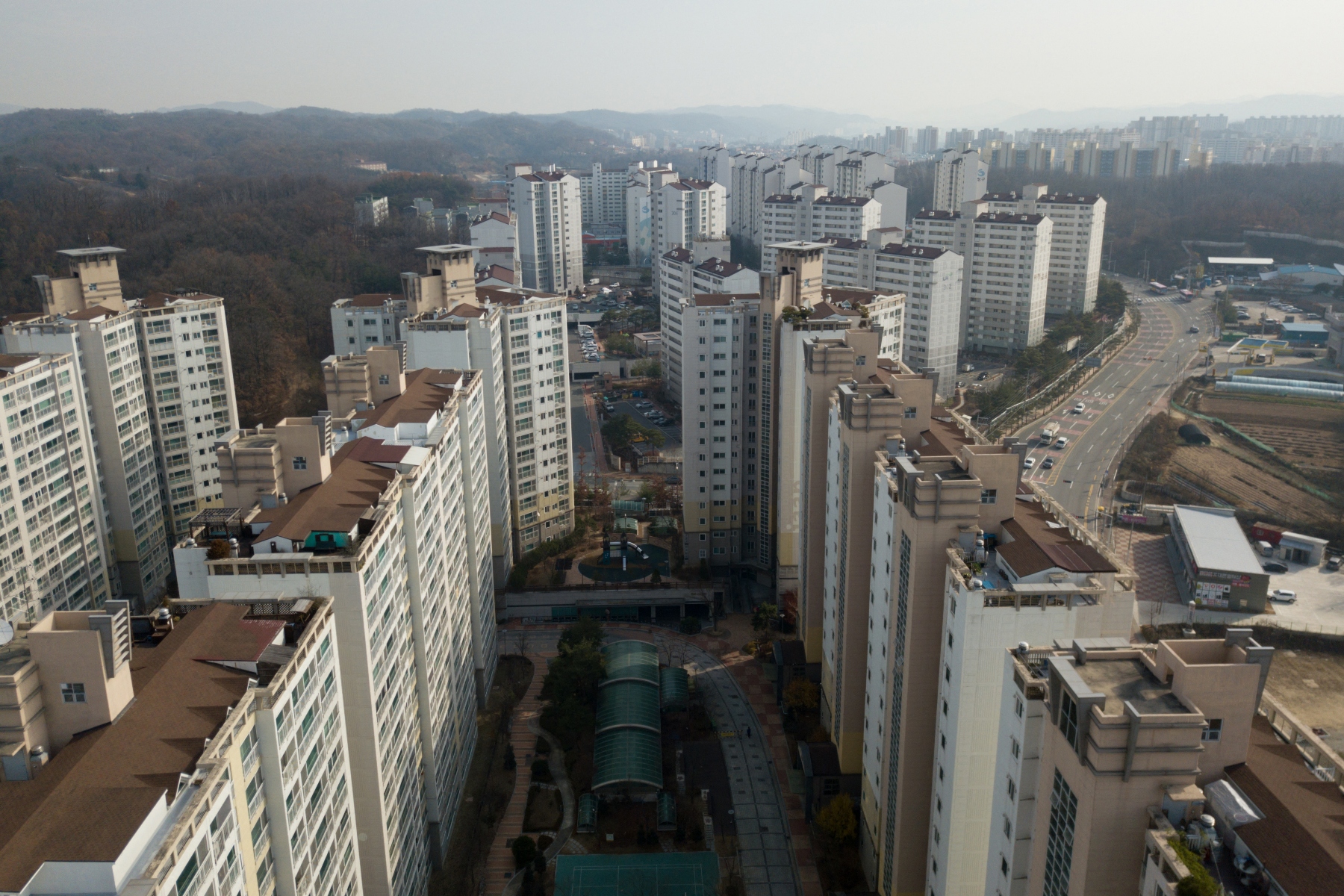
An aerial view of high-rise apartment buildings in Andong, South Korea. Source: Ed Jones/AFP
Rental contracts in Korea
There are three types of rental contracts in South Korea:
- Weolse: Seoul Metropolitan Government notes that Weolse refers to paying a small deposit after a one to two-year rental contract and paying a monthly usage fee (monthly rent). The deposit is generally 10 to 20 times the monthly rent. InterNation notes that the unique thing about this type of rental contract is that you can negotiate a lower monthly rent if you increase the key money.
- Jeonse: There have been instances where a huge amount of key money was paid to the landlord, which resulted in the tenants not needing to pay rent at all. This is called a Jeonse contract, which requires the tenant to put down key money that equals the price of the property. No rent payments are necessary as the landlord will collect the interest rate for the deposit the entire duration of your stay (usually two years). This is less popular among international students as they do not have the means to take out bank loans in Korea.
- Banjeonse: InterNations notes that Banjeonse is a mixture of Weolse and Jeonse, where the tenant needs to put down a sizable deposit and pay rent each month. This also means that both the key money and monthly rent will be lower. In this case, the deposit could be about 100 million KRW (~US$76,000). Asia Society notes that in Seoul, jeonse makes up around 70% of lease/rental agreements.
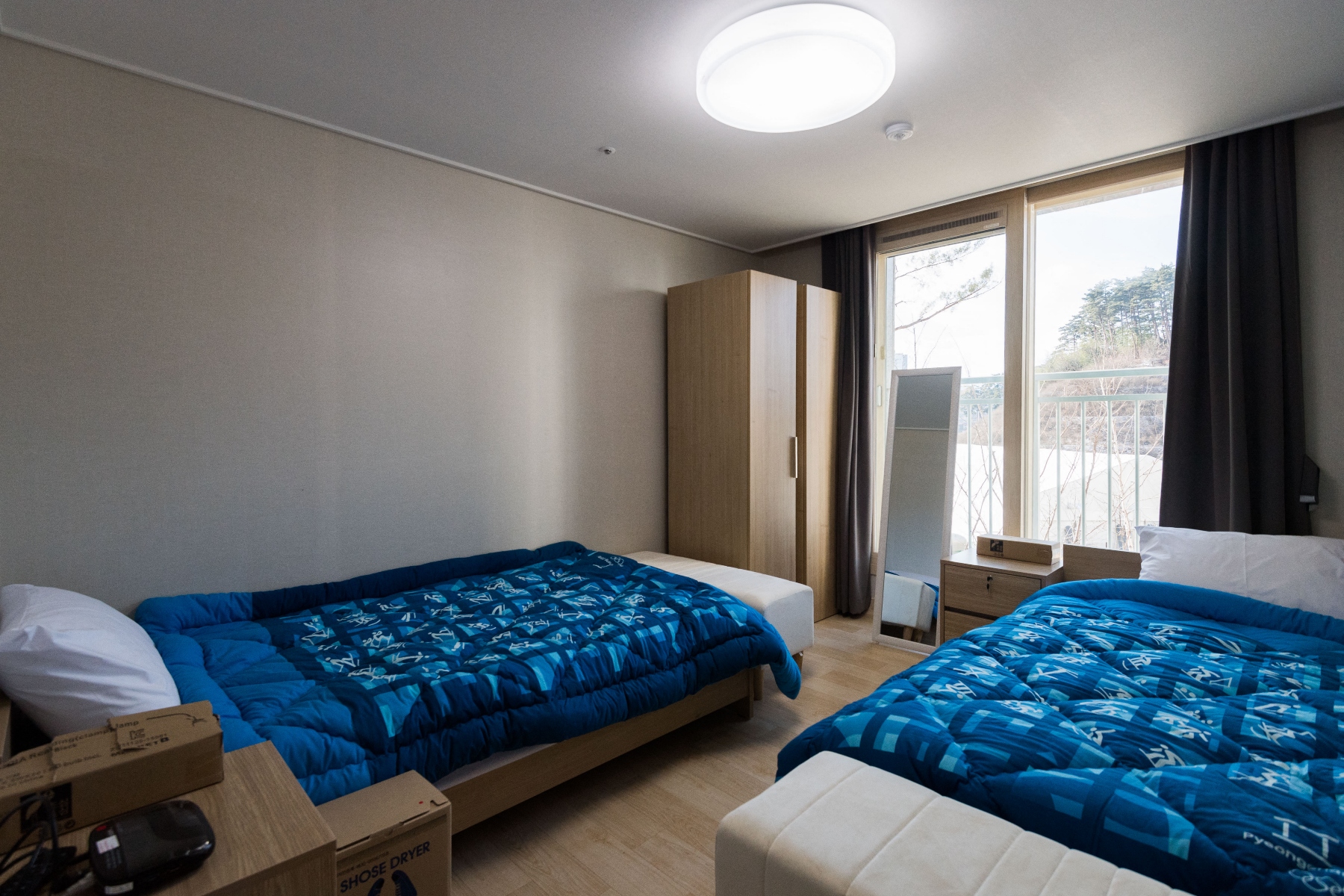
Living in Korea can be expensive, but not if you share a room with one or two other friends. Source: François-Xavier Marit/AFP
Rules for renting and living in Korea
Most contracts in Korea usually last at least two years. While there are options for short-term stays, the average price for temporary rentals is typically higher than what you would pay for a place with a long-term lease, notes InterNation. However, if you do want to sign a one-year lease, you might be able to negotiate that with your landlord. You are allowed to break your lease if you want to leave earlier than intended. However, how you go about it heavily depends on the landlord.
As for documentation, you generally need a passport, visa, and an “Alien Registration Card”. The documents you are required to present depend on the type of rental contract you are signing. For example, if you chose to go down the jeonse route when renting in Korea, you will not need to prove your employment. However, if you are signing a weolse lease, your landlord will most probably ask for your employment contract.








